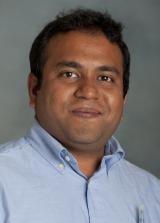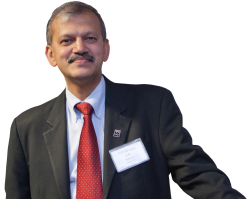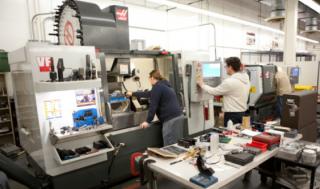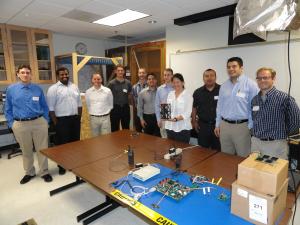 The study of blood flow, particularly in the brain, is typically the domain of biologists, physiologists, neuroscientists and physicians. But Vibhav Durgesh, assistant professor of mechanical engineering, has recast it as an engineering problem. His novel approach to blood flow inside brain aneurysms won him this year’s CECS faculty research fellowship, an annual award that allows a faculty member to spend a semester investigating an idea or pursuing a research project.
The study of blood flow, particularly in the brain, is typically the domain of biologists, physiologists, neuroscientists and physicians. But Vibhav Durgesh, assistant professor of mechanical engineering, has recast it as an engineering problem. His novel approach to blood flow inside brain aneurysms won him this year’s CECS faculty research fellowship, an annual award that allows a faculty member to spend a semester investigating an idea or pursuing a research project.
“The reason I’m studying this is that blood is a fluid, and I want to quantify the conditions leading to bursting in aneurysms,” he says.
An aneurysm is the abnormal ballooning or bulging of the wall of a weakened blood vessel, and it is estimated that 6 million Americans have an unruptured aneurysm. A ruptured aneurysm can be debilitating or fatal, yet corrective surgeries for the condition are high-risk operations.
For his research project, Durgesh will use various glass models to simulate different aneurysms, each filled with fluid that has the same index of refraction as blood. Using a pump system that two of his students are designing, he will make sure the fluid flows much as it does in the human body. With those elements in place, he will make fluid dynamics measurements, using laser Doppler anemometry, to quantify shear stress on the aneurysm wall.
Durgesh’s goal for this year is to get the project set up and running so he has the ability to make the measurements. In a later phase he would like to obtain MRIs from patients in order to make exact replicas of aneurysms. Eventually he’d like to test different size stents inside the aneurysm models to determine the optimal design, contacting companies for sponsorships and additional funding.
A message from the Dean
February 6, 2014Industry partnerships – HAAS
February 6, 2014Industry Partnerships – Jet Propulsion Laboratory
February 6, 2014
Leave a reply Cancel reply
-
New Faculty Bring Unique
February 20, 2015 -
Medtronic-funded research projects seek to advance diabetes treatment
November 21, 2011 -
Giving: Alumnus and Professor gives back to students and faculty
January 20, 2021



